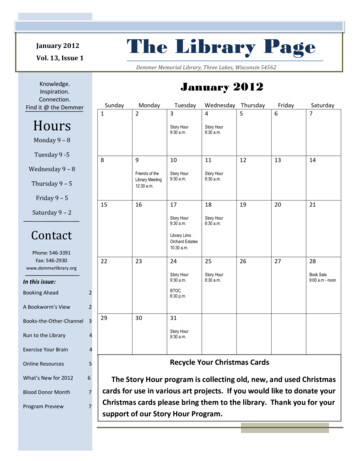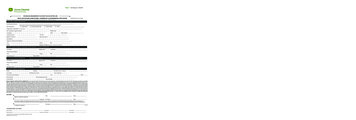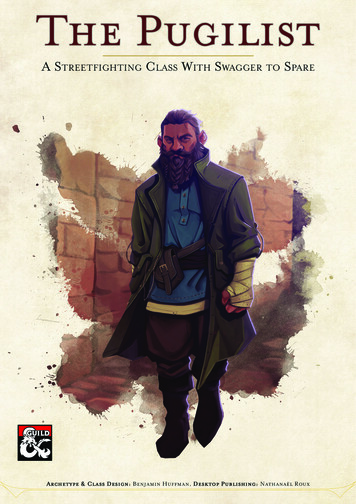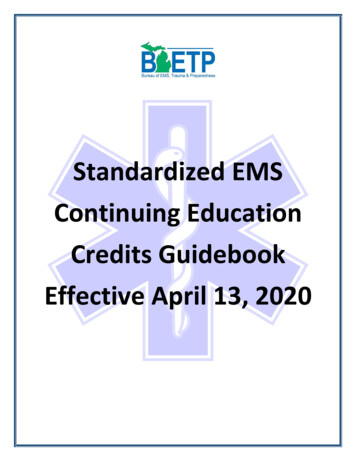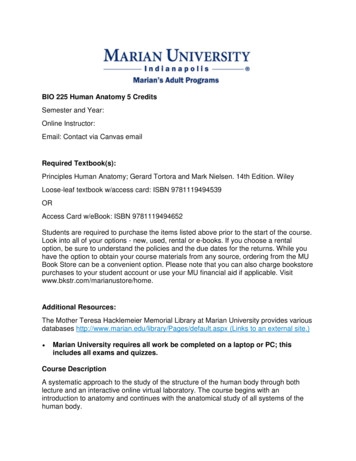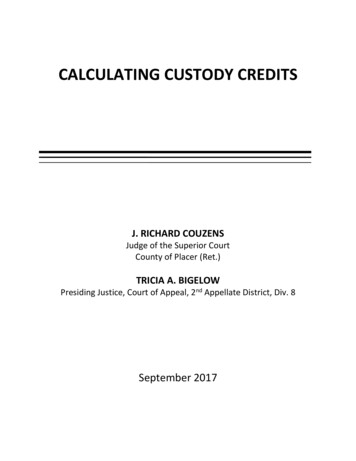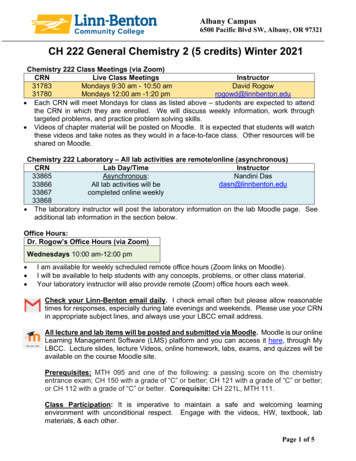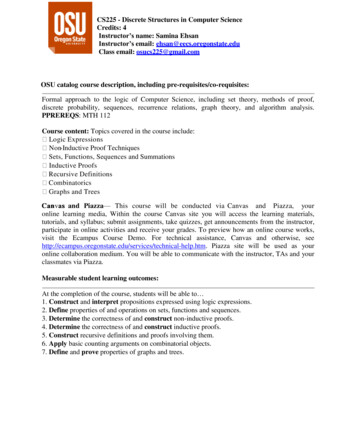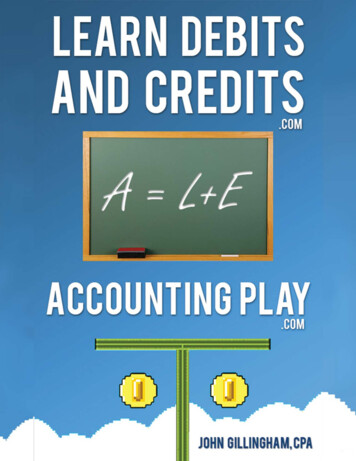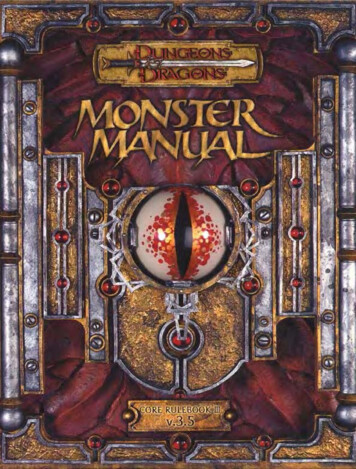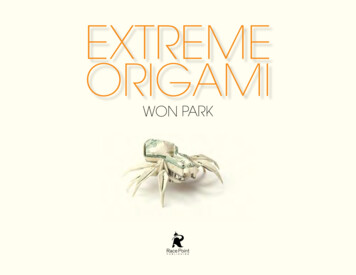
Transcription
CREDITS PAGETo my first teacher—my mother—and to Tiffany, who inspires me.
CONTENTSviviii48PEGASUS90SCORPION96KOI FISHINTRODUCTION18SPIDERterms and symbols22FOX54PRAYING MANTIS60STAG BEETLE104STEGOSAUR66CAR110DRAGON1ARE YOU READY TO TAKE THeEXTREME ORIGAMI CHALLENGE?26PIG2BUTTERFLY32SWORDFISH6TOILET38SEA TURTLE74FIGHTER JET122FORMULA 1 RACE CARTANK42OX82BAT133ACKNOWLEDGMENTS12
INTRODUCTIONWon Park’s highly creative and intricate work has long been admired throughout the origami community. His“Where did you get it? This is my koi!” was Won’s reply. He explained that once in a while he would unfold a billdollar bill designs are some of the most challenging and popular, and there are legions of people around theand use it as spending money if the folding wasn’t proceeding to his liking.world who fold nothing but paper money. Despite the popularity of the form, only a relatively small numberof talented, creative artists publish money folds, and Won Park is widely regarded as a leading master of thisWe appreciate Won’s intricate designs even more when they are folded from larger rectangles of handmadespecialty.papers, such as the papers that we make here at Origamid Studio. Won folded a larger version of his Koi fromthis special, handmade paper, and we proudly displayed it to an enthusiastic response from the public.The US dollar bill is a popular format because it is readily available and relatively affordable, it is rich withintricate and artful engravings, and it is permanently printed on wonderfully strong, crisp stock. This mediumWon is also generous with his time. He taught at our studio during the show in Waikiki as well as at the localstands up well to heavy folding and is particularly suited to wet-folding and the artful shaping that wet-foldinglibraries around Oahu, and for Scott Macri’s ongoing Hawaii Origami Club workshops. Won has been andaffords. The dollar bill’s rich tapestry of whorls, leaves, letters, and even an eye, are all elements that can becontinues to be an honored guest at many origami conventions and gatherings around the world.incorporated into the design of the money fold.We know that this eagerly anticipated title would not have been possible without the hard work of his illustrator,Since the rectangular proportions of US paper currency are fixed despite denomination, every design can beMarcio Noguchi—another generous, dedicated, and talented origami artist. Marcio’s careful attention to detailfolded with a bill of any value. Fresh paper currency is strong and archival. It will not easily tear when folded,and his eye for the flow of the folding sequence are evident in these clear, concise, and accessible diagrams.nor crumble with age, so it should last for generations. When you present a gift of cleverly folded cash, expectsurprise and delight! It is sad indeed that so many countries are in the process of replacing their smaller paperWe look forward to more of Won’s amazing designs being published, and to the ongoing floodgate of newdenominations with coins.designs by his growing number of protégés.Won’s attention to detail is remarkable, but that is not unusual for an origami designer of this caliber. What isMichael LaFosse and Richard Alexanderunusual is the combination of his eye for detail, his meticulous folding execution, and his finely tuned sense ofOrigamid Studioartistry. Some time ago, when we were setting up our Origami D show in Waikiki, Hawaii—a short drive fromWon’s house—we received a dollar as change from a local grocery clerk. It felt curiously soft, and upon closerexamination, we noticed it had been divided by dozens of crossing creases. We kept the bill safe until the nexttime we saw Won. We showed it to him and asked, “Do you recognize this?”
TERMS AND SYMBOLSSquash foldPleat foldRepeatCrimp foldOpen LayersWaterbomb basePush/a pply pressureValley foldMountain foldInside reverse foldExisting creaseOutside reverse foldHidden linesPreliminary foldBird base:Closed sink(a)Rotate(b)Turn overPetal fold(c)(d)(e)Open SinkClose upFoldRabbit-ear foldSwivel foldView from this angleSpread sinkFold and unfold
Are You Ready to Take theExtreme Origami Challenge?As with anything you do, origami—especially extreme origami—takes practice. Lots of practice. If you are already an advanced folder, youare well prepared to take the Extreme Origami challenge offered by this book. But if your skills are at an intermediate level, here are some When folding, compare the current step to the results in the step ahead. Sometimes knowing what the final result should look like will enable you toexecute a particularly difficult step.tips that will help you attack these models. Beware of overfolding. Paper softens with use—even durable stock like dollar bills—and when it is too soft, the folds won’t hold. Which is yet another Origami instructions can be tricky to follow. Most of the action is shown in the diagrams, but the text is important, too. Learn to read bothtogether to get the whole story. Some important folds are referred to by name; they are listed in the terms section. Read the terms through and learn them before you startthese models. Equip yourself with these basic tools when you are ready to begin folding:(1) Practice paper—use plain papers that are larger than (but with the same proportions as) regular dollar bills, if you can. They willmake the tiniest folds a little easier to learn. You will need to practice these models a lot before using real money to fold them. Oneof the challenges of folding with real money is that it has patterns and artwork printed on it that can make it hard to see the creases.So the value of getting up to speed on plain practice paper can’t be oversold.(2) A bone folder, for making sharp, accurate folds. Imprecise folds can throw the whole model off.(3) Tweezers, for grasping small folds firmly. It takes a bit of practice to learn how to use them properly.(4) Small paper clamps, for helping thickly folded paper to keep its shape.(5) Fresh, new dollar bills, for when you are ready to fold tight, crisp final models.good reason to practice, practice, practice. Sometimes you just need to step away from your project. These projects are extremely challenging. There will be times when you will throw your handsup in frustration. That’s when it is time to take a break and a breather. A little perspective always helps. Enjoy the process. Stay focused on making sharp, accurate folds and the rest will follow with time and practice. Allow yourself time to fold these models. They are works of art; making art takes time. Final shaping details are as important to the end product as theintermediate steps, so give these your full attention, too.
BUTTERFLYPEGASUS1Fold in half horizontally andvertically. Unfold.2Fold the edges along theshort vertical crease.3Turn over.4Fold the angle bisectors,crease to crease and edgeto crease.5Fold existing mountaincreases to the center crease.6Turn over.7Inside reverse fold, usingexisting creases.8Turn over.9Rabbit-ear fold, usingexisting creases. The topwill not lie flat.10Push the layers inside into akind of inside reverse, so thateverything will lie flat.Repeat on the other side.(In progress)2EXTREME ORIGAMIEXTREME ORIGAMICHAPTERBUTTERFLYTITLE3
11Pinch to create reference points. First, bringthe edge to the crease, then the pinch tothe crease, and finally the last pinch to thecrease. Repeat on the other side12Swivel fold: first, create a valley foldstarting at the ⅛ mark and bringthe mountain crease to close to the¼ pinch. Fold the top edge down a tinybit, creasing so that everything lies flat.17Lift the flap, slightly markingexisting crease.18Pre-crease: fold the centercrease into a folded edgeand bring to the corners,pivoting from the intersectionof the creases.19Reverse the creases fromvalley to mountain; valley foldthe center crease.(View from back)13144Repeat on the other side.Wrap around (outside reverse).15Turn over. Detailedview of wings is next.16Valley fold the corner in, thenfold the top layer up, finessingas needed so paper lies flat.Repeat on other side.EXTREME ORIGAMI20212223Collapse the tail alongexisting creases and fold inhalf while folding the wingsdown to meet.24Valley fold the wings from thepivot point along the dashedline. They will close on the otherside, while the tail will swiveldown.25View from the top for detailsof the head.26Open slightly. Valley fold theinside tip of the head fromcorner to corner.Crease the angle bisectors.28View from the inside for morehead detail. Open the wings.29Move the flap to the center to allow space to fold the edge to edge.Move the flap back, and fold the corner to the center line. Repeat onthe other side.30View from the top again toadjust wings. Press wings outto open them up.The completed butterflyMountain crease the anglebisectors.Start the collapse: pushthe head part down, andbring the edges together. Themodel will not lie flat.27Fold the tip back to the edge.Close.CHAPTERBUTTERFLYTITLE5
Precision folds are very important with this model.1Fold in half. Unfold.5Crease at the pointsindicated.2Fold edges to crease andunfold. Turn over.6Fold to the crease andunfold. Turn over.3Fold edges to the creasesindicated and unfold.Turn over.7Crease in half.4Fold the short edge to thelong edges and unfold tocrease the angle bisectors.8Fold edge to the crease.Unfold. Turn over.TOILET6EXTREME ORIGAMIEXTREME ORIGAMICHAPTERTOILETTITLE7
Use crease from layerbeneath for reference91011Pinch the edges between thecreases.Fold the crease to thepinches created in the laststep. Unfold.13Create symmetrical creasesusing the creases on the layerbeneath as reference.17Make vertical creasesbetween the pointsindicated.21Sink the sides and collapsethe model flat. See the nextstep for the result.14Unfold.18Mountain fold the long edgesto the center on the back,using existing creases.22Create diagonal creases.15Fold between the creases.Unfold.19Create some new creases,then make the modelpartially 3-D by collapsing asindicated. The model will notlie flat.23Crease vertically through thepoints indicated.20Fold as indicated, usingexisting creases. The modelwill still not lie flat.24Reinforce existing creases(this will crease all the layers).Turn over.Crease between the edgeand the pinches as well asbetween the creases shown.Pay attention to the correct reference line128Valley fold.EXTREME ORIGAMI16Fold edges to the lineindicated and creasealong the dotted linesshown. Unfold.CHAPTERTOILETTITLE9
25Fold edges to the center.29Swivel top layer onlySwivel fold the top layer. Themodel will not lie flat.33View the complete modelfrom above again.37Fold the lid, seat and the base.a26Fold the edges to the creaseand unfold.30Bring the layers together,positioning them so they areperpendicular to the restof the model. Next step isviewed from the side.34Pay attention to the correctcreases to be used.Make these creases inpreparation for the collapse.Make thisperpendicular272810Mountain fold at intersection.Unfold.Pop the center of theintersection and collapse(it should look something likea waterbomb base).EXTREME ORIGAMI3132Open slightly and mountainfold excess paper so theedge is about level with therest of the model. This is thebowl and will be adjusted atthe end for the proper shape.Mountain fold the smalltriangular flaps.3536Crease alllayersOpen in abox shapeInsert the tabs to create thetank.Final details next.bSeat: round, then narrow withmountain folds and sink the tip.Lid: sink tip, partial inside reverse onthe top and bottom.cBase: valley fold the bowl tocreate a base so the model canstand.The completed toiletIf needed, adjust thebowl created in step 31ROUGH FINISHEDIMAGESTHROUGHOUTARE FPO ONLY.CHAPTERTOILETTITLE11
You will need to make two units to assemble this model.Make the tracks first:TANKEXTREME ORIGAMI16Crease between thelines. Turn over.7Crease between thelines. Turn over.Fold in half. Unfold.2Fold the short edge to thelong edges diagonally andunfold to crease the anglebisectors. Turn over.3Crease at the pointsindicated.8Bring edges to theintersections indicated,and crease betweenthe lines only. Turn over.4Crease between the linescreated in the previous step.Turn over.9Pleat fold. Turn over.5Crease between the linescreated in the previous step.10Accordion fold.CHAPTERTANKTITLE13
11Fold all the layers usingthe existing creases as areference.12The tracks are complete.4Crease between the linescreated in the last step, up tothe diagonals.5Crease vertically through theintersection indicated. Turnover.9Fold vertically through thepoints indicated. Unfold. Turnover.13Swivel fold.14Swivel fold.Slightly below the line10Fold the corner, starting at justbelow the line.11Pleat with a mountain fold onthe existing crease, bringingthe folded edge to thecorner.Make the gun turret:12Fold the short edge to thelong edges and unfold tocrease the angle bisectors.Fold in half. Unfold.67Collapse (like awaterbomb base).Fold edge to the corner andcrease. Unfold.15Repeat steps 12 to 14 on theother side.(12-14)314Fold edges to the centerline and crease up to thediagonals. Turn over.EXTREME ORIGAMI8Fold edge to the lines shownto create small diagonals.Unfold.12Swivel fold.16Turn over.TANK15
1720Valley fold the top layer only,squashing the middle layers.Shape the gun:a(View from bottom)Form small swivelsby the turret androll the barrel intoa tube shape. Turnover.Create asmall pleat.1819Viewing from the top,pinch the flaps on eachside to create the muzzlebrakes. Finish shapingthe barrel.aValley foldboth flaps.cRabbit-ear foldone of the flapsand opensquash the other.16cDetails of the hatch and maingun are next.21Fold the hatch:EXTREME ORIGAMIb2425Valley fold top layer only,squashing the middle layers.1On the tracks unit, push themiddle layer inward on theexisting crease to make ittridimensional.2Turn over.3Insert the tabs on the turretinto the pockets on thetracks unit.Fold under.(View from top)26Put
Won Park’s highly creative and intricate work has long been admired throughout the origami community. His dollar bill designs are some of the most challenging and popular, and there are legions of people around the world who fold nothing but paper money. Despite the popularity of the form, only a relatively small number of talented, creative artists publish money folds, and Won Park is .
